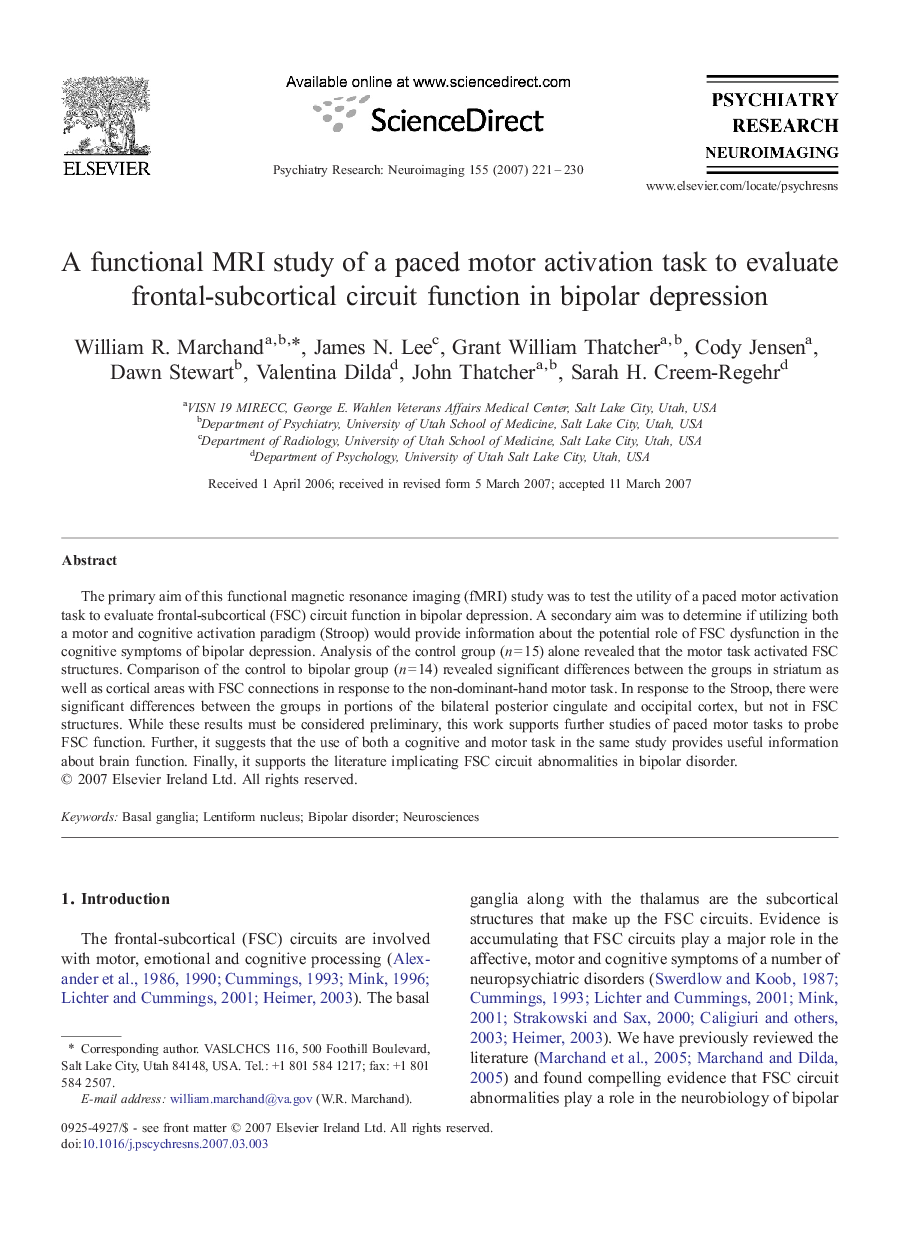| Article ID | Journal | Published Year | Pages | File Type |
|---|---|---|---|---|
| 334654 | Psychiatry Research: Neuroimaging | 2007 | 10 Pages |
The primary aim of this functional magnetic resonance imaging (fMRI) study was to test the utility of a paced motor activation task to evaluate frontal-subcortical (FSC) circuit function in bipolar depression. A secondary aim was to determine if utilizing both a motor and cognitive activation paradigm (Stroop) would provide information about the potential role of FSC dysfunction in the cognitive symptoms of bipolar depression. Analysis of the control group (n = 15) alone revealed that the motor task activated FSC structures. Comparison of the control to bipolar group (n = 14) revealed significant differences between the groups in striatum as well as cortical areas with FSC connections in response to the non-dominant-hand motor task. In response to the Stroop, there were significant differences between the groups in portions of the bilateral posterior cingulate and occipital cortex, but not in FSC structures. While these results must be considered preliminary, this work supports further studies of paced motor tasks to probe FSC function. Further, it suggests that the use of both a cognitive and motor task in the same study provides useful information about brain function. Finally, it supports the literature implicating FSC circuit abnormalities in bipolar disorder.
